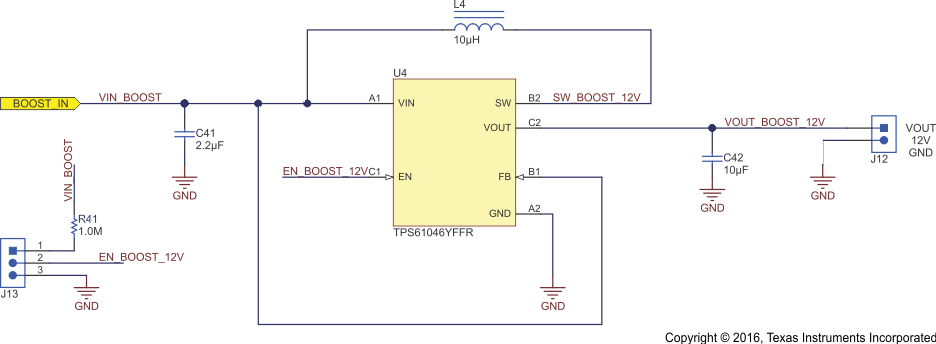SLUA748A December 2015 – April 2016 BQ25120 , BQ51003 , TPS61046 , TPS61240 , TPS62743
- Trademarks
- Power Management Reference Design for a Wearable Device with Wireless Charging Using the bq51003 and bq25120
- AExperimental Results
- Revision History
2 PMOLED Display Power Design
- A PMOLED display is often used in the wearable device because of its low power consumption and low cost. The TPS61046 is a perfect boost converter to power the PMOLED display because of its features as following:True Disconnection between Input and Output during Shutdown.
- Small package size of 0.80-mm × 1.20-mm WCSP
- Output Voltage Up to 28 V capability and Output Over-Voltage Protection.
- Output Short Circuit Protection
At fixed 12 V output voltage condition, the device only needs three external components, as in Figure 6. More details about TPS61046 pin function, characteristics and external component selection can be found its datasheet. The method of using the device to power a PMOLED display and the performance waveforms can be found in another reference design “PMP9775”.
 Figure 6. Schematic of Boost for PMOLED Display Power
Figure 6. Schematic of Boost for PMOLED Display Power